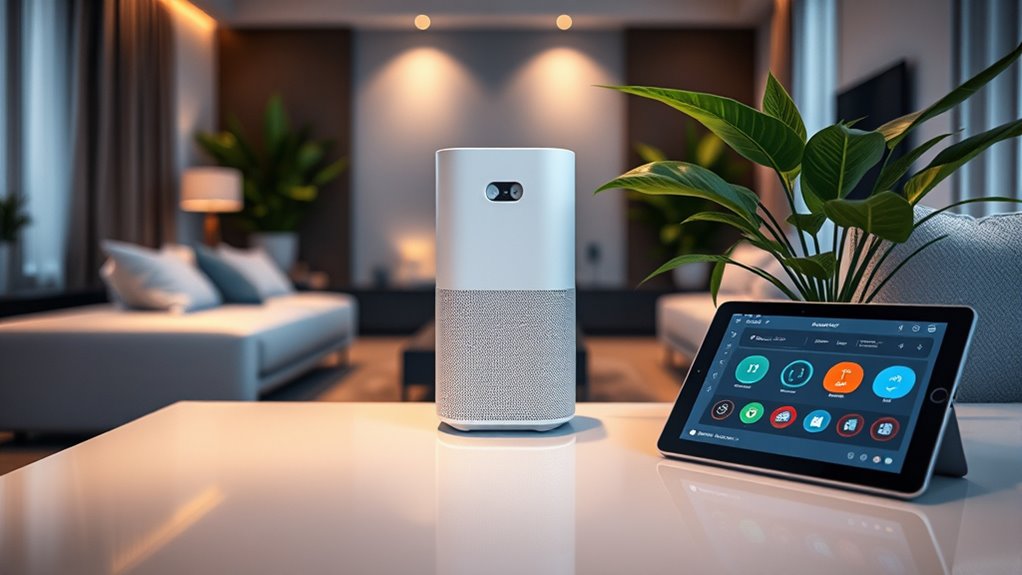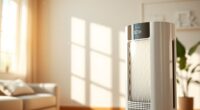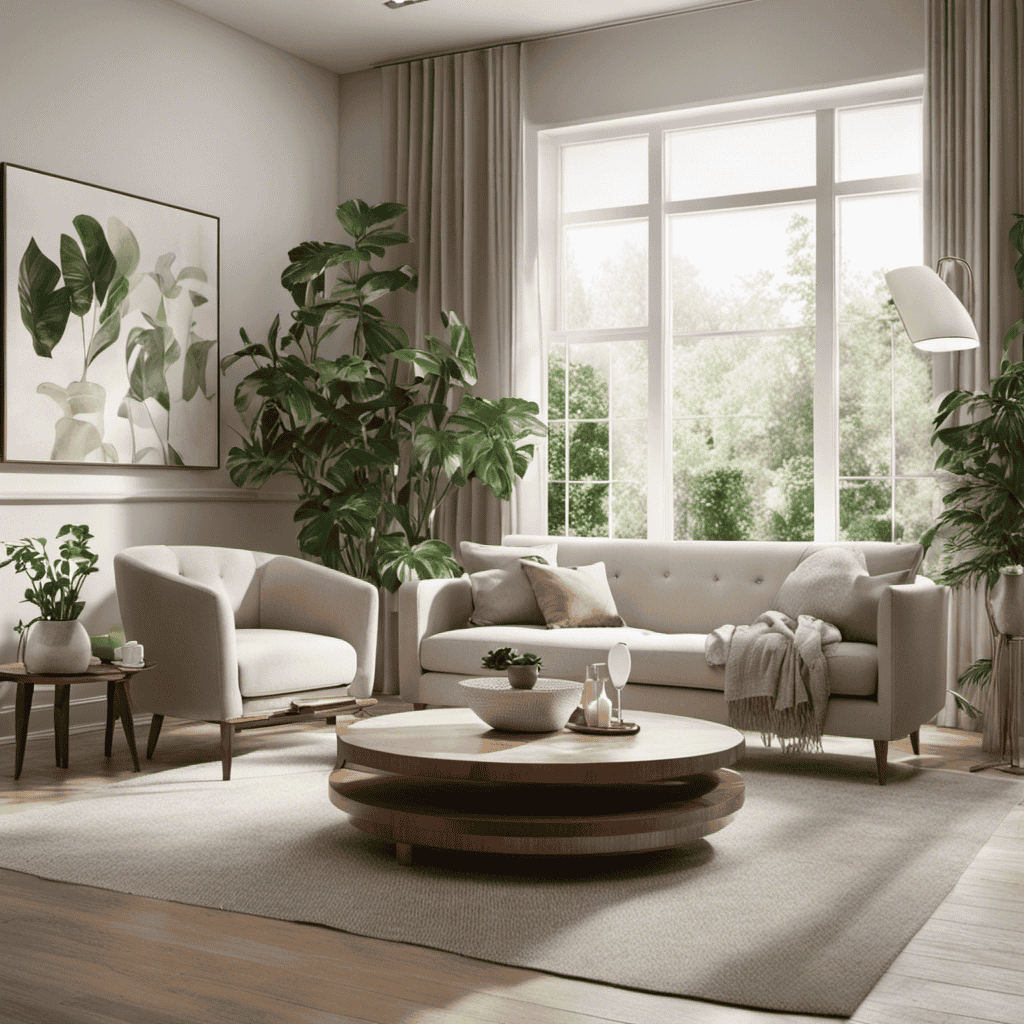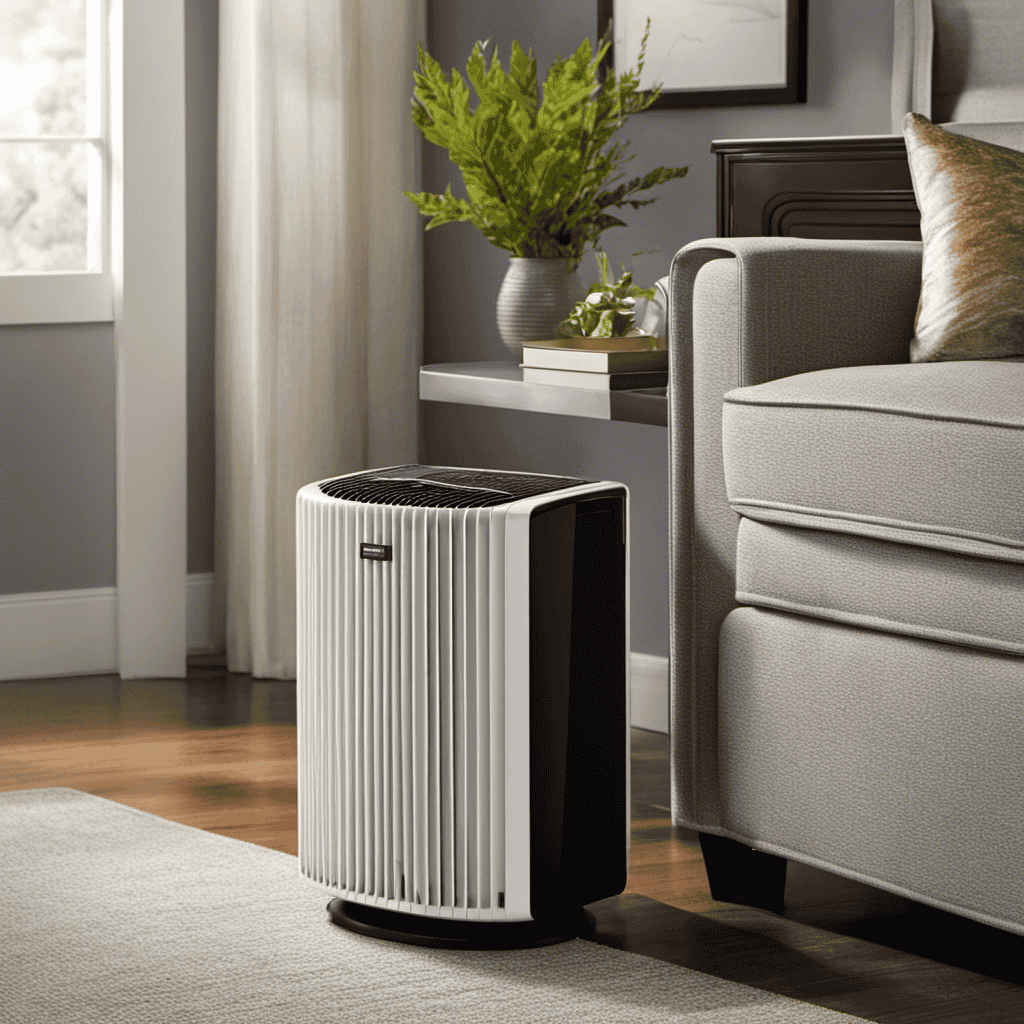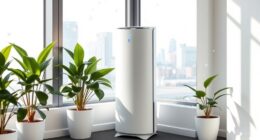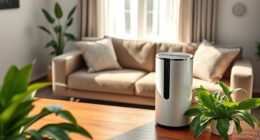Smart-home air purifier automation keeps your indoor air clean effortlessly by integrating sensors, voice commands, and scheduling. You can set devices to respond automatically to real-time air quality changes, ensuring ideal purification without manual effort. Voice controls let you make quick adjustments, while scheduling helps manage high pollution times efficiently. This system creates a healthier, smarter environment and simplifies maintenance. Keep exploring to learn how to customize and enhance your air quality management even further.
Key Takeaways
- Integrate sensors and automation rules to dynamically respond to real-time air quality levels.
- Use voice commands for quick manual control and overrides via popular assistants like Alexa or Google Assistant.
- Schedule purifier operation during high pollution periods or specific times to optimize energy use.
- Set threshold alerts to automatically activate or adjust purifiers when pollutant levels exceed safe limits.
- Ensure seamless system integration for a hands-free, responsive, and healthier indoor environment.
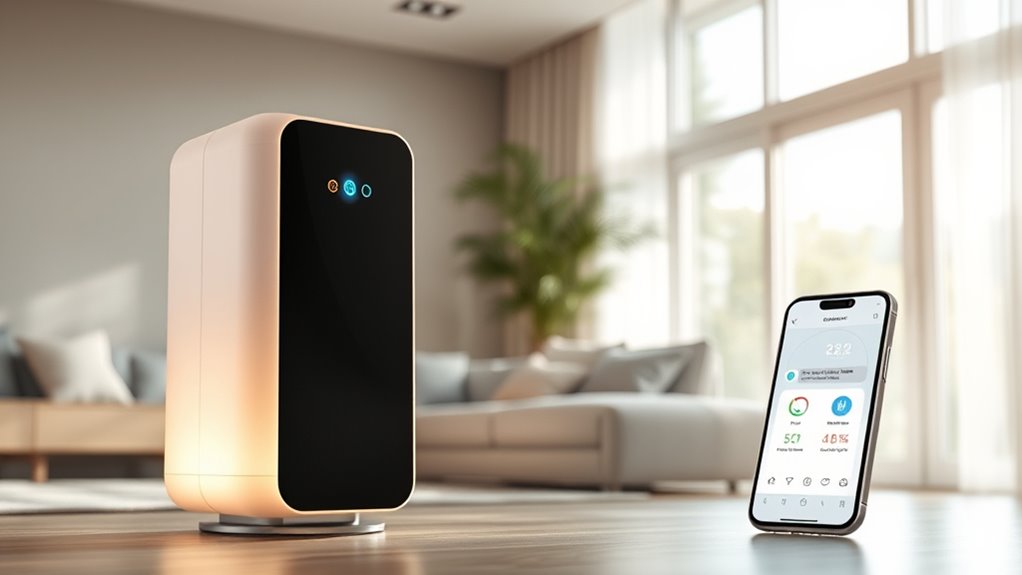
Smart-home air purifier automation allows you to effortlessly maintain clean air quality without constant manual adjustments. With the right setup, your air purifier can respond dynamically to changes in your environment, ensuring optimal air quality at all times. One of the key features that make this possible is the integration of air quality sensors. These sensors continuously monitor pollutants, particulate matter, humidity, and other air quality indicators in real-time. When the sensors detect elevated levels of dust, allergens, or other pollutants, they send signals to your smart system, prompting your air purifier to turn on or increase its fan speed automatically. This means you don’t have to be constantly checking or adjusting your device; instead, it works silently in the background, maintaining a healthier environment for you and your family.
Smart air purifiers automatically adjust based on real-time sensor data for effortless, cleaner indoor air.
Voice command integration further enhances the convenience of your smart air purification system. With simple voice prompts, you can manually override or adjust settings without lifting a finger. Whether you want to turn on the purifier, switch modes, or check air quality status, just ask your preferred voice assistant—like Alexa, Google Assistant, or Siri. This not only makes managing your air quality straightforward but also integrates seamlessly into your daily routine. Imagine arriving home and saying, “Hey Google, turn on the air purifier,” and having it respond immediately. Or, if you notice your allergies acting up, you can instantly ask your system to boost purification levels without navigating through apps or manual controls.
Automation also allows you to set schedules based on your lifestyle, such as having the purifier run more intensively during high pollution periods or when you’re home. You can program it to respond to specific air quality thresholds, ensuring you don’t waste energy running it unnecessarily. The sensors continuously provide data, enabling your system to make intelligent decisions about when to activate or adjust settings, which enhances both air quality and energy efficiency. Additionally, integrating air quality sensor data from trusted sources can improve the accuracy of your system’s responses and ensure optimal performance.
In essence, combining air quality sensors and voice command integration creates a highly responsive, hands-free experience. You gain peace of mind knowing your air is consistently clean without the need for constant oversight. This setup not only improves indoor air quality but also simplifies your life, making your smart home smarter and healthier. With these tools working together, maintaining a fresh, allergen-free environment becomes effortless, allowing you to focus on what truly matters instead of worrying about the air you breathe.
Frequently Asked Questions
Can Smart Air Purifiers Detect Specific Allergens Automatically?
Smart air purifiers can detect specific allergens automatically thanks to advanced allergen detection sensors. These sensors improve accuracy by identifying particles like pollen, pet dander, or dust mites in real-time. When allergen detection shows increased levels, your purifier adjusts its operation to clean the air more effectively. This automation guarantees you breathe cleaner air without needing to manually monitor sensor accuracy or intervene, making your home healthier and more comfortable.
How Do I Integrate Multiple Smart Home Devices With My Purifier?
To integrate multiple smart home devices with your air purifier, start by checking device compatibility and supported automation protocols like Zigbee, Z-Wave, or Wi-Fi. Use a central hub or smart home app to connect everything, then set up automation routines that trigger your purifier based on sensor data or device actions. This way, you create seamless interactions and optimize your home’s air quality effortlessly.
What Safety Features Are Available in Automated Air Purifier Systems?
Imagine your air purifier as a vigilant guardian, with safety features acting as its shield. Child safety locks prevent little hands from meddling, while overheat protection keeps the device cool and secure. These features work silently in the background, ensuring your home’s air stays pure without risking accidents. You can breathe easy, knowing your smart purifier is equipped to safeguard everyone, especially curious kids, with reliable safety measures.
Are There Energy-Saving Modes for Long-Term Automation?
You can definitely find energy-saving modes in automated air purifiers, which help boost energy efficiency and optimize power management. These modes automatically adjust operation based on air quality or time schedules, reducing energy consumption during low-demand periods. By enabling these features, you guarantee your system runs efficiently over the long term, saving you money and reducing environmental impact without sacrificing air quality.
How Does Voice Control Work With Automated Air Purifier Functions?
Voice control works through voice commands that connect you directly to your smart-home air purifier. When you speak, your voice commands are recognized and processed via a compatible voice assistant, like Alexa or Google Assistant. Device integration guarantees your air purifier responds instantly, adjusting settings such as fan speed or power on/off. This seamless interaction makes managing your air quality effortless and hands-free, enhancing your smart-home experience.
Conclusion
Now that you’ve uncovered the secrets of automating your smart-home air purifier, you’re truly in the driver’s seat of clean, healthy air. Imagine your purifier working seamlessly like a well-orchestrated symphony, responding effortlessly to your needs. With these tips, you’ll breathe easier, knowing your space stays invigorating without lifting a finger. Embrace the power of automation, and turn your home into a sanctuary where air quality is always a gust of fresh air.
